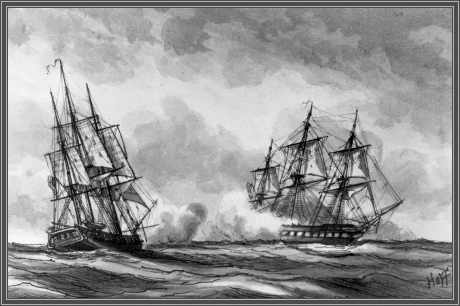The Shining Sea (30 page)
Authors: George C. Daughan

The Pacific Northwest had been of great interest to Britain since the last part of the eighteenth century when Captain Cook had visited there. Spain had a strong interest as well, dating back to the sixteenth century, and so did Russia. The European rivalry nearly resulted in a war between Britain and Spain in 1789 over competing claims to Nootka Island and what became known as Vancouver Island. The United States had a strong interest as well. In May 1792 an American captain, Robert Gray, had been the first outsider to venture into the Columbia River in his ship
Columbia
. At the time, the famous British explorer George Vancouver was in the area, and he and Gray had met and talked about the difficulty of exploring the river. Vancouver decided that it was impossible because of the tricky entrance, but Gray attempted it and succeeded, thus establishing an American
claim to the river, the country surrounding it, and, indeed, the entire Northwest. America's interest was heightened significantly after Jefferson sent Lewis and Clark on their famous expedition. Neither the European countries nor the United States thought the Native Americans who abounded in the area would be an obstacle to expansion.
John Jacob Astor, the fur trader, became interested in establishing a trading post at the mouth of the Columbia in 1811â1812. He wanted to trade the bountiful furs of the American Indians in China, and he succeeded in establishing his Pacific Fur Company at the mouth of the river, naming the settlement Astoria. It was this settlement that Captain William Black was sent to destroy. Before he arrived, however, the Pacific Fur Company heard that the British were coming to seize it and decided to sell to the Northwest Company before the Royal Navy arrived and simply took it.
P
ORTER LEFT THE
G
ALAPAGOS
I
SLANDS, AS PLANNED, ON
October 2, 1813. His performance during the time he was there and that of Lieutenant Downes and the rest of the
Essex
men had been spectacular. Their seamanship had been continuously tested. They had no reliable navigation charts, and the prevalence of fog, strong, tricky currents, and erratic winds made sailing at all times dangerous. That they survived with no major mishaps was a testament to their luck, certainly, but also to their extraordinary courage and skill.
Porter enumerated in his journal all he had accomplished:
We have completely broken up [the British] whale fishery off the coast of Chile and Peru. . . . we have deprived the enemy of property to the amount of two and a half millions of dollars, and of the services of 360 seamen. . . . We have effectually prevented them from doing any injury to our own whale ships. . . . The expense of employing the frigate
Phoebe
, the sloops of war
Racoon
and
Cherub
[also had to be taken into account].
Porter estimated that the cost of sending three warships after the
Essex
was $250,000. He claimed that by adding the actual captures he made to the value of the American whale ships who were not captured because of
his presence, to the cost of sending warships after the
Essex,
less the expenses of the
Essex
for a year ($80,000), his activities cost the British $5,170,000. Whether this fanciful figure bore any relation to reality was of little importance. What mattered was that, without a doubt, Porter had had a significant impact on Britain's whale fishery, as well as on America's. And he did it at a negligible cost to his government.
As much as Porter had accomplished, however, and as fine as his ship and crew had performed, they needed a secure place to refresh. The
Essex
, having been at sea almost continuously for eleven months, required a major overhaul, and her crew, although still in remarkably good health, needed time ashore. The Marquesas Islands were the perfect place for both.
P
ORTER LEFT THE
G
ALAPAGOS IN THE NICK OF TIME.
C
APTAIN
Hillyar arrived there three weeks later, on October 23, with the
Phoebe
and the
Cherub
, and stayed for weeks. To begin with, he searched everywhere among the islands for the
Essex
. It took him several weeks, and when he could not find her, he remained for an additional time, hoping she would return. Porter had no intention of going back, however, and Hillyar remained frustrated and anxious. He knew how badly the Admiralty wanted the
Essex
destroyed. When he finally gave up and left the islands, he returned to the South American coast and began again a thorough search there, which consumed even more time. He must have wondered if he would ever find the
Essex
. Porter may have simply gone home, either sailing around Cape Horn or traveling west across the Pacific to the Indian Ocean and around the Cape of Good Hope. It's unlikely that Hillyar ever considered that Porter might be seeking him out as much as he was seeking the
Essex
. The idea would have struck Hillyar as preposterous.
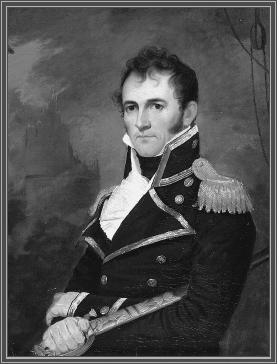
Captain David Porter
(C
OURTESY OF THE
N
AVAL
A
CADEMY
M
USEUM
)
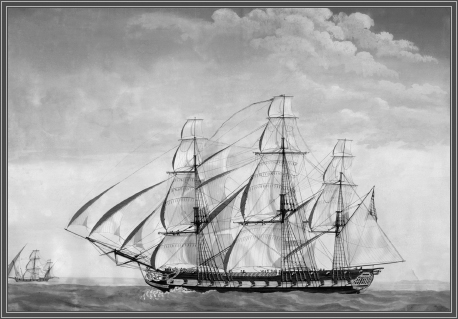
The USS
Essex
(C
OURTESY OF THE
P
EABODY
E
SSEX
M
USEUM
)
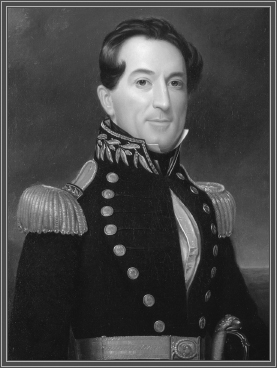
David Glasgow Farragut at age thirty-eight
(C
OURTESY OF THE
N
ATIONAL
P
ORTRAIT
G
ALLERY
)
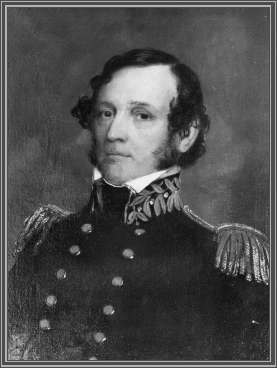
Lieutenant John Downes
(C
OURTESY OF THE
N
AVAL
I
NSTITUTE
P
RESS
)
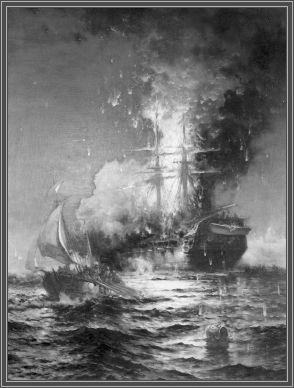
The burning of the
Philadelphia
(C
OURTESY OF THE
N
AVAL
I
NSTITUTE
P
RESS
)
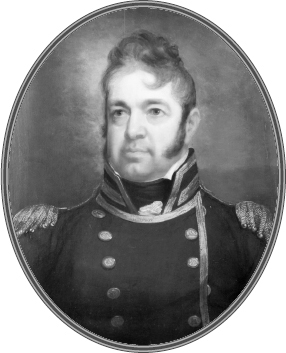
Commodore William Bainbridge
(C
OURTESY OF THE
N
AVAL
I
NSTITUTE
P
RESS
)
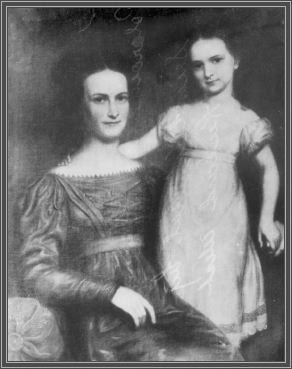
Evelina Anderson Porter and her daughter
(C
OURTESY OF THE
N
AVAL
I
NSTITUTE
P
RESS
)
